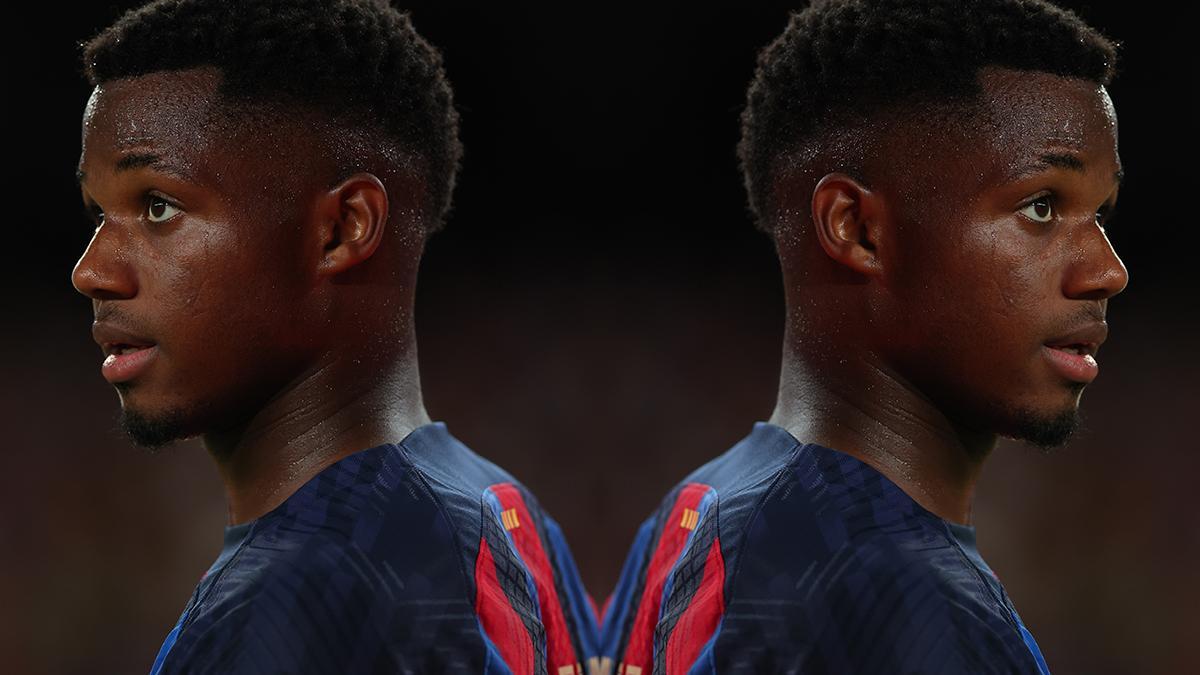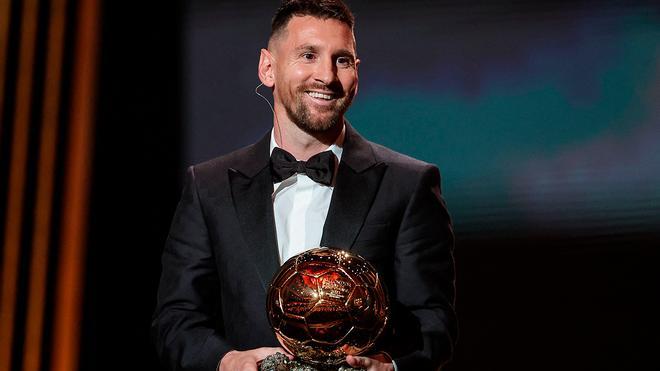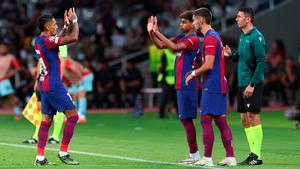Ansu Fati: Minutes managed on the dangerous return

Gallery9 Photos
The Barcelona forward has been kept in reserve for a lot of the game time so far
It was love at first sight. Ansu Fati made his debut at just 16 years and 298 days to become the second youngest player in the history of Barcelona, after Vicenç Martínez -who debuted in 1941-, and with his goal against Osasuna a week later he set another record. His charisma and performance earned him Messi's No 10 after the great Argentine player's goodbye, but today the reality of Ansu is very different. A string of injuries has made everyone, including him, doubt what his future will be like at Barça.
After an excellent debut season in a personal sense, Ansu ended 2019-20 with eight goals in 33 games but also having lived through the dismissal of his mentor, Ernesto Valverde, and the Lisbon disaster against Bayern, with Quique Setién on the bench. The next one started well with Ronald Koeman, a starter at 17 years old and connecting with Messi in a spectacular way. However, after 10 games, five goals and two assists, everything went to pot: against Betis he broke the internal meniscus of his left knee and had to undergo surgery. One, two, three and four times. Goodbye to the season.
He returned in 2021-22, with La Liga already underway but on November 6, in Balaídos, he injured his left leg and was out for two months. In his second comeback, in the cup and against Athletic, again he hurt his hamstring: he was going to play just half an hour but the extra time complicated everything. Ansu cried. The whole of Barcelona cried. A terrible blow that created the need to have another operation. This time he said no. He opted for a conservative treatment that forced him to be out for three months before returning to the team, already with Koeman at home and Xavi at the Camp Nou in charge.
This season Ansu has only started one of the eight games, the Champions League opener against Viktoria Plsen. In the other seven he has come off the bench, playing, at most, half an hour. In total, 225 minutes, 31.2% of the minutes of the season. Among the strikers, he’s the second least used by Xavi, behind Lewandowski (87.5%), Dembele (77%), Raphinha (55.6%) and Ferran (31.3) and only ahead of Memphis (18.1%).
Why does he play so little? Is his attitude in training bad? Absolutely not. Does he not get the coach's idea? No. The coaching staff is happy with his work but right now there are some elements that prevent Ansu from being a starter and the first is to do with the injuries and the long inactivity already mentioned. Pay attention to the data: since his injury at Celta, 22 and a half months ago (almost two years), he has only been able to play fifteen of the 45 games that there have been, and only one as a starter -the one mentioned this season, against Viktoria. And none for 90 minutes. Right now, with the San Mames game - the one with the relapse - in everyone's memory, prudence is at its utmost and nobody at the club wants to take risks with Ansu's readaptation to top level competition.
Hamstring injuries are very common in activities that involve sprinting or rapid acceleration and Ansu, like any of his teammates, must deal with them. The club is working with preventive programs and even, in this break without games, have proposed a specific routine for him. As injuries to this hamstring muscle are multifactorial, all of them must be attended to in an attempt to minimize the risk of injury.
The first important factor on which they are acting is strength, looking for exercises that impact the injured area with specific work -that is, both contraction and stretching of the muscle- using the conical pulley and, also, specific training of the entire posterior chain of muscles and joints -hip, ankle and foot-, key for propulsion. The second is the training load on the field to try to ensure that the player has a very high mental and physiological concentration, reproducing the efforts that he will make during the matches according to the game model - it is not the same to be a Barcelona center forward than one at Getafe, for example. The third factor that Iván Torres and the rest of the physical trainers focus on is high-speed running, a fundamental characteristic of forwards since it often precedes goals and other decisive actions. It must be taken into account that the majority of hamstring injuries (57%) occur during high-speed sprint actions that are usually worked on, when possible, according to the competition calendar, two and three days before the games.
Other important factors are medical care and physiotherapy, nutrition and post-match recovery which, as we can see, often begins on the pitch itself once the match is over and fans have already left the stadium. Then stretching, cold water immersion, and of course plenty of rest. A GPS tracks his status.
Topics with the letter





